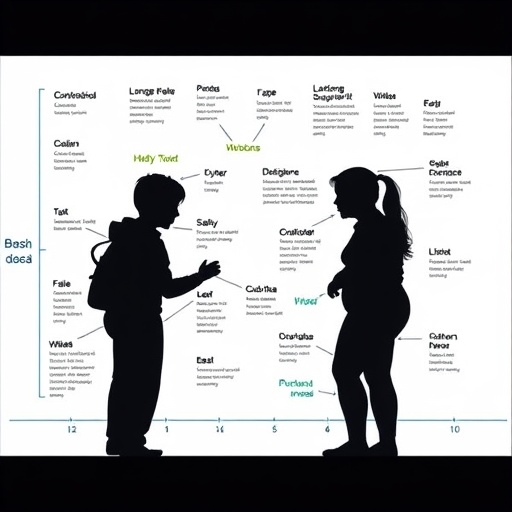
Credit: Kanazawa University
[Background]
The human brain is highly developed with higher functions compared to other animals, thanks to which humans are believed to have acquired special abilities. One of the important factors considered to contribute to the development of the brain is the gyrus*1, the fold on the cerebral cortex*2 surface.
The cerebral cortex is particularly important in higher brain functions. The cerebral cortex of higher animals, including humans, has many folds, called the gyrus (plural: "gyri"). By acquiring the gyrus in the process of evolution, it has become possible to have a large number of neurons, and thus great development of brain functions has been acquired. On the other hand, the mouse, a widely used model animal, has a brain without gyri. This has made it very difficult to do research on the gyrus using the mouse as a model animal; therefore, research on the gyrus has been much retarded.
Our research group has been using the ferret*3, a higher mammal, that has a brain with a gyrus, rather similar to the human brain (Figure 1). Our group has been developing a research technique for ferrets reported in several articles, which allows analysis of ferrets at the genome level. Our laboratory is a world leader in research in this field. Furthermore, by using this technique, we have succeeded in developing a ferret disease model that shows impairment in the gyrus, which, we believe, has significantly contributed to genetic approaches to the brain of higher mammals.
[Results]
By using the latest genome editing*4 tool, a type of genetic engineering, we have succeeded in knocking out a specific gene in the ferret cerebral cortex and in elucidating one of the mechanisms of gyrus formation.
- Establishment of a technique for knocking out a specific gene in the ferret cerebral cortex by using the latest genome editing tool
We have succeeded in establishing a technique for knocking out any gene in the ferret cerebral cortex by combining CRISPR/Cas9, the latest genome editing tool, and the technique we have so far developed for introducing a gene in the ferret cerebral cortex. This new technique opens a way to a new stage of genetics research of the brain of higher mammals.
- Important neurons for gyrus formation
We searched for neurons playing important roles in gyrus formation and found that neurons on the upper-layer cerebral cortex were essential (Figure 3). This finding is the first in the world; it was not known so far which neurons in the brain would play important roles in gyrus formation.
Gyrus impairment by knocking out the gene Cdk5
We have applied the above-mentioned technique to knocking out a gene called Cdk5 in the ferret cerebral cortex and found that gyrus formation was impaired (Figure 2). This result indicates that Cdk5 is an important gene for gyrus formation.
These results of the current study indicate that functions of Cdk5 in neurons of the upper-layer cerebral cortex are important for the formation of the gyrus (Figure 3).
[Significance and future prospect]
In this study, our research group has elucidated one of the mechanisms for gyrus formation by developing a research technique for the ferret brain. Until today, research on gyrus formation has been rare so this study is truly world-leading. It is expected that this study will pave a way to elucidate brain evolution, up to the human brain, which was previously quite difficult with mice, a widely used model animal.
In addition, humans suffer, although rarely, from diseases due to gyrus impairment, the pathogenesis of which is largely unknown. The new technique we have developed in this study is expected to lead to elucidation of the etiology of various diseases including those mentioned above, which was difficult to investigate in the mouse.
###
[Glossary]
-
Gyrus
The fold (protrusion) of the cerebral cortex surface. The gyrus is thought to have been developed in the process of evolution. The gyrus allows accommodation of a large number of neurons in the cerebral cortex, which has had much to do with development of higher brain functions. Although the gyrus attracts much research attention, mechanisms of its formation are still largely unknown.
-
Cerebral cortex
Name of the anterior region of the brain. The human cerebral cortex is especially well developed in comparison with that of other animals so it is thought to be important in higher brain functions. Impairment of the cerebral cortex is considered to cause various neurological diseases and psychiatric disorders. It is one of the most important regions of the brain and attracts much attention in brain research.
-
Ferret
A higher mammal akin to the weasel. The ferret has a more developed brain than the mouse and has gyri. Hence, the ferret is used as a model animal in this study. Few studies have been done on ferret genetics and our research group is the world leader in this field.
-
Genome editing
One of techniques to selectively 'edit' a target portion of a genome, including knocking out genes. CRISPR/Cas9 is one such remarkable technique, which is thought by many specialists to be a strong candidate for a Nobel Prize in the near future.
Media Contact
Fujiko Imanaga
[email protected]
81-762-645-977
http://www.kanazawa-u.ac.jp/e/index.html
Related Journal Article
http://dx.doi.org/10.1016/j.celrep.2017.08.024




